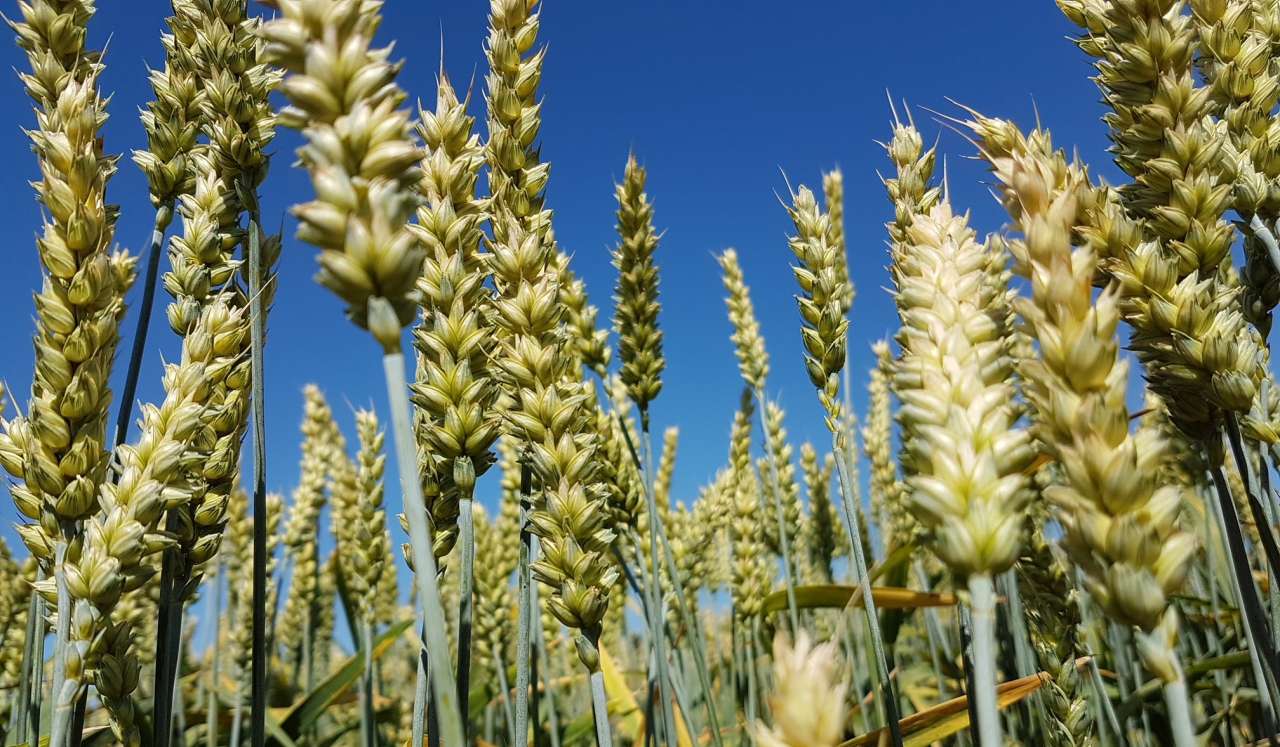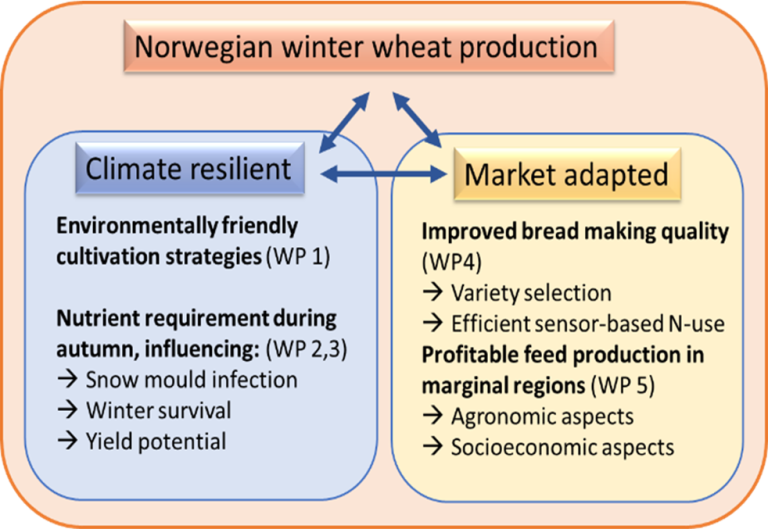Division of Food Production and Society
Climate resilient and market adapted Norwegian winter wheat production

End: apr 2025
Start: may 2021
Interest in winter wheat is growing in Norway. Climate change is expected to expand the wheat producing regions, yet warmer, wetter conditions in autumn and winter will increase soil erosion and nutrient loss risks.
Project participants
Heidi Udnes Aamot Wendy Marie Waalen Jon Arne Dieseth Ulrike Böcker Anne Kjersti Uhlen Trond Henriksen Ingerd Skow Hofgaard Krzysztof Kusnierek Shiori Koga Anne Strøm Prestvik Anne Kari Bergjord Olsen Till Seehusen Einar Strand
| Status | Concluded |
| Start - end date | 01.05.2021 - 30.04.2025 |
| Project manager | Annbjørg Kristoffersen |
| Division | Division of Food Production and Society |
| Department | Grain and Forage Seed Agronomy |
| Total budget | 13000000 |
Soil tillage practices that protect the soil and provide optimal plant development are needed. At the same time more precise autumn fertilization strategies are needed to optimize plant growth and freezing tolerance, and reduce the risk of snow mould while minimizing nutrient losses to the environment.
The variability of grain quantity and quality from year to year is a challenge for the industry to manage. In some years the supply is larger than what the milling industry is willing to use, leading to a large surplus of Norwegian winter wheat of food grade.
There is a need to identify varieties and management strategies to improve the quality of Norwegian winter wheat, thus increasing the bread making market potential. More customized production strategies are also needed for the growing domestic feed wheat market.
The objective of the project is to develop climate resilient production strategies to produce winter wheat that fulfills the needs and requirements of the Norwegian market.
Prohøst will:
1) Investigate the impact of soil tillage strategies on plant establishment, winter survival and yield
2) Evaluate the influence of autumn fertilization strategies on plant development, cold hardening, winter survival and yield
3) Quantify the influence of autumn fertilization strategies on development of Microdochium spp. related diseases in winter wheat, and possible impacts on grain quality
4) Increase the utilization of winter wheat for human consumption through improved variety selection and optimal, sensor-based fertilization
5) Identify agronomic and socioeconomic factors impacting the profitability of winter wheat production for feed and bread making, thereby allowing for more customized/site-specific winter wheat production strategies.
